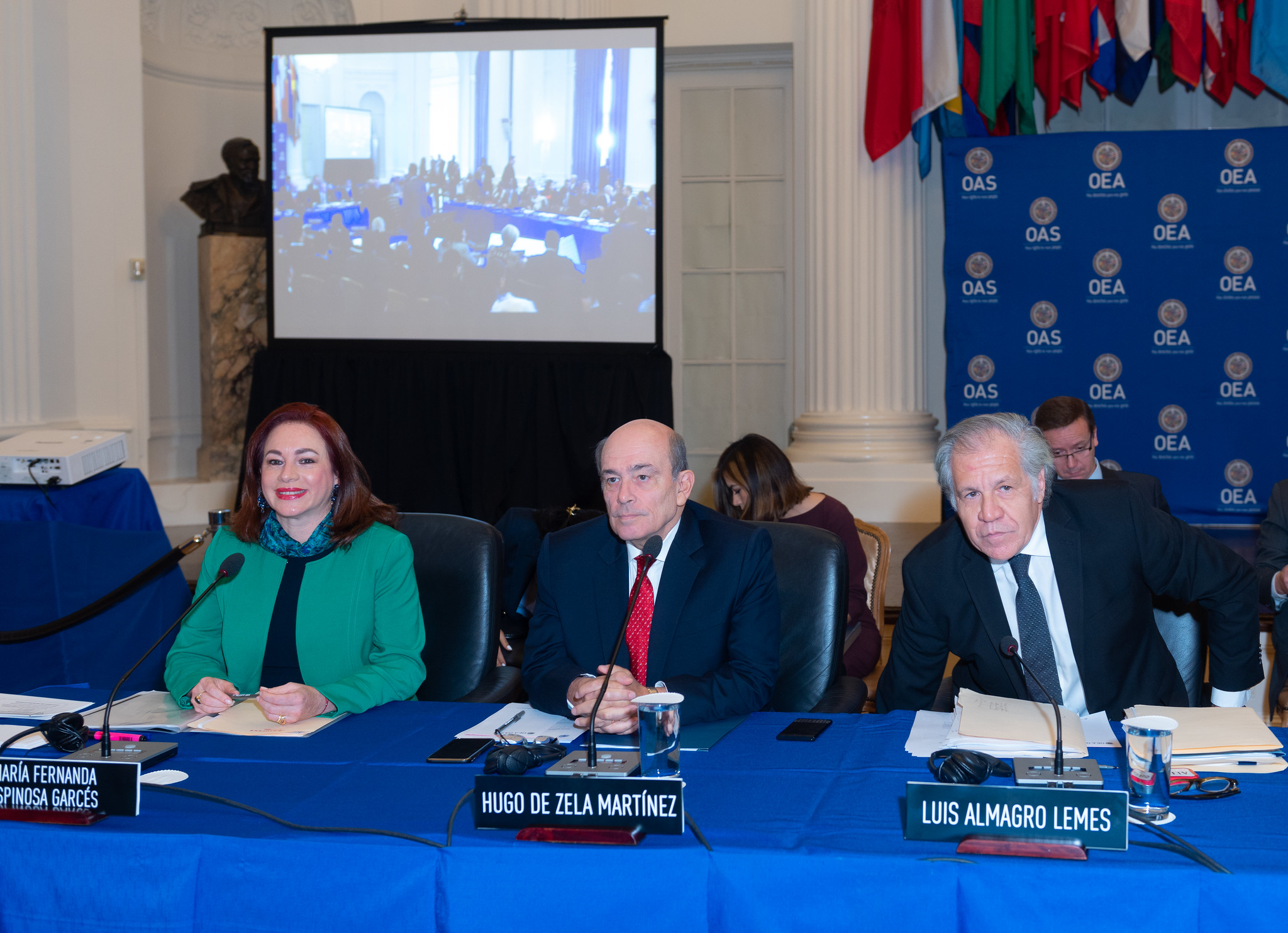The last ferry between Cuba and the United States left Havana for Key West at 3pm on October 31, 1960. Operated by the West India Fruit and Steamship Company of West Palm Beach, the SS Havana City was just one of many commercial ferries bringing American travelers (and their cars) to Cuba. The U.S. trade embargo, the first pieces of which had been put in place by President John F. Kennedy less than two weeks earlier, would freeze the routes for the next five-and-a-half decades.
On May 5, the U.S. Treasury Department’s Office of Foreign Assets Control (OFAC) granted licenses to a handful of American operators seeking to re-establish ferry service between the United States and Cuba.
“I can confirm that OFAC has issued certain specific licenses for passenger ferry service, but we cannot provide additional details as to whom or how many,” an OFAC spokeswoman told Reuters.
One of those operators is Baja Ferries, a division of the Miami-based United Americas Shipping Services. The company, which already runs ferries on the west coast of Mexico, plans to carry up to 2,000 passengers between Florida—it hasn’t yet been decided if the boats will be leaving from Miami, Fort Lauderdale, or Tampa—and Havana. Service will run three times a week at first, and travelers can expect restaurants, entertainment and shopping aboard. If everything goes according to plan, service could start by the fall.
But Robert Muse, the Washington D.C. lawyer who handled Baja’s license application, says the importance of re-establishing ferry service between the U.S. and Cuba goes far beyond a more convenient way to traverse the Florida Straits. Muse spoke to Justin Rohrlich for Americas Quarterly about the process, and what it all means for the U.S.-Cuba relationship.
Justin Rohrlich: How long is the trip, and how much will a voyage from Florida to Cuba cost?
Robert Muse: It’s about seven hours from Miami. It will leave sometime in the late evening, and get into Havana harbor a little after dawn. The price is, so far, tentatively around $400 round-trip, which is cheaper than the air charters. The caveat here is that quite a lot of the airfare to Cuba consists of landing fees at the Havana end. So, we’re hopeful that the fees the Cubans charge per passenger are modest, in order to get this business going.
JR: Who will the customers be? Cuban-Americans visiting family? Tourists?
RM: Well, tourism is illegal by U.S. statute, so for now, not tourists. But Cuban Americans who are flying down on charters to visit family, I think they will find these modern ferries very impressive. I don’t think anybody enjoys getting to the Miami airport at 4:30 am to check in for a charter flight four hours ahead of time, then paying upwards of $2 a pound in luggage fees. So, it’s a more agreeable way to get to Cuba for Cuban-Americans, who are probably four-fifths of the licensed travelers to Cuba right now.
Most importantly, they can take a lot of stuff with them. It’s extremely expensive to ship to Cuba, because commercial shipping lines are not interested in a 200-pound consignment going to Havana. But if you want to take an air compressor to your brother-in-law, so he can open up a little car repair shop, or [if] you are going to sell or donate a pizza oven to someone who wants to open a restaurant, you can easily get those types of things onboard a ferry.
It will greatly increase the flow of materials into Cuba. I see women standing there with seven hats on their heads, wearing six layers of clothing, in order to try and avoid the excess baggage fees, which have always been crippling. I didn’t even know they made duffle bags as big as some of the ones I’ve seen going to Havana from Miami. With a ferry, you can just fling them into the hold and pick them up on the other end.
The U.S. is also now opening up exports to Cuba’s private sector. Provided somebody is not employed in the state sector, the goods they produce can now come into the U.S. People could put together a box load of clothing or ceramics they’ve made, and send them up to a relative or friend in the U.S. to try to market them. It’s not much, but it’s the first genuinely bilateral trade since John Kennedy formally ended it [in July 1963]. I don’t know if the Obama administration fully grasps how big this is, or if they’re just looking to make a symbolic, easy statement, but everybody may be pleasantly surprised by how far these ripples can extend.
JR: What was involved in getting the U.S.-Cuba ferry service approved? Has it been approved on the Cuban end, as well?
RM: The applications sat there for several years, multiple applications. Four were granted [on Tuesday, May 5]. Nothing was done with them, but that’s not the fault of OFAC—they had no policy guidance on that. All the U.S. government allowed to go between the United States and Cuba all these years has been air traffic, which in a way, is discriminatory against marine transport. Then, all of a sudden, the State Department and the White House made the decision that they were going to allow it.
The conversion of interest sections to embassies in Washington and Havana is taking longer than people thought it would. We’re going on five months. I think they will open in May or June, but I think this is a good, visible interim signal from the Obama administration that it’s serious about this legacy project—normalized relations with Cuba. “Normalize” is an ugly word, but when we had “normal” relations with Cuba, we had ferries running back and forth from Key West to Havana every day.
The Cuban government was aware we were seeking this license, but we haven’t asked them to initiate the approval process on their end. We’re only half-done, because there’s no point engaging in theoretical exercises. No ferries have landed in Cuba for 50-odd years. Now that the licenses have been granted, it’s worth the Cuban government seriously considering what would be required to proceed. All these things are now capable of being discussed and negotiated without a sense of wasting your time because you know the U.S. government would never approve it.
JR: Were you surprised to get the applications approved?
RM: What has surprised me somewhat on the American end—and I’ve been involved in Cuba policy going back to the early 90s—but everyone had become accustomed to a culture of “just say no.” Anything anybody would try to do, the answer was no. I’ve seen Cuban-Americans who would want to send money to Cuba to rehabilitate a local community center, and they would be told, “No.” The Bush administration said Cuban-Americans could visit relatives once every three years, no exceptions. One of the officials was asked, what if someone has a dying mother? Do they go see her on her deathbed, or do they go to the funeral? He said, well, that person would have a choice to make. [Note: Deputy Assistant Secretary of Western Hemisphere Affairs Dan Fisk said in 2004, “An individual can decide when they want to travel once every three years and the decision is up to them. So if they have a dying relative, they have to figure out when they want to travel.”]
JR: What is the approval process involved on the Cuban end, and how will it be different than getting something like this approved elsewhere?
RM: Cuba’s a very vertical system; anything having to do with the United States has to be signed off on at a very high level. Their foreign ministry will look at it; I’m assuming Raúl [Castro], his senior advisors. U.S.-Cuba relations have been so strained for so long, the U.S. figures disproportionately large in the Cuban mind. Cuba looks at everything from the perspective of state security, the national interest. This is not just a ferry, it’s an incident in the bilateral relationship. Does this further their—let’s say, “agenda”—for normalization? The president is committed to this, and to use a tennis metaphor, I’d like to see the Cubans keep this volley going. I’m also assuming that at some point, they will want to have their own ferries coming to the U.S.
JR: What’s in this for the Cubans?
RM: Remittances from Cubans living abroad are the single largest component of the Cuban economy now, it’s no longer sugar. Remittances are in the neighborhood of $5 billion a year. Then there are the 400,000-500,000 Cuban-Americans that visit Cuba each year. Assume each one spends $1,000 dollars while they’re there. That’s $400 million. It would have an important effect on the Cuban economy; it certainly begins to generate capital domestically. You send a guy who has a small garage a tire-beading machine, [and] he’s then making money that gets put into circulation—and it does have a substantial multiplier effect.






